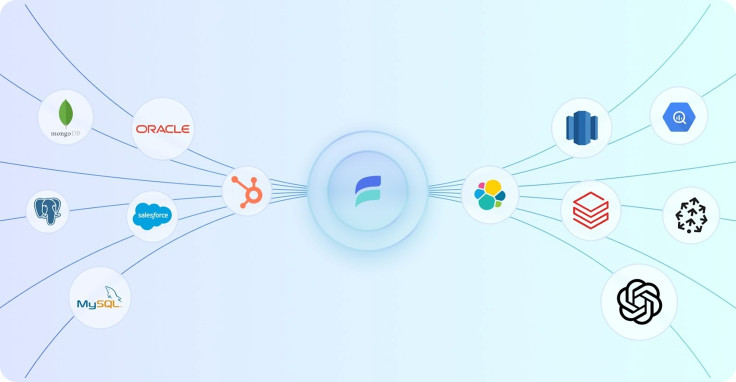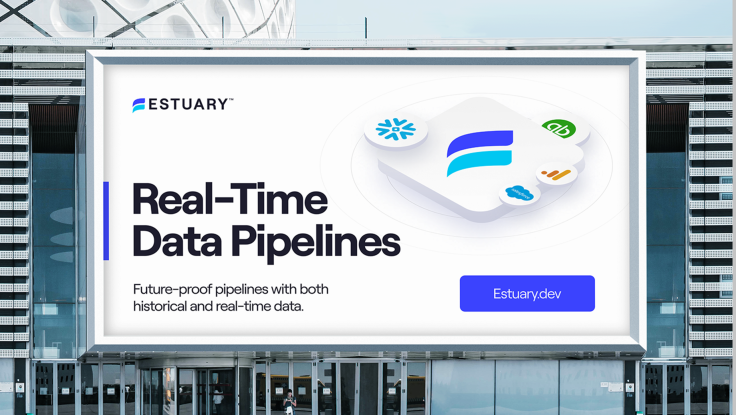
When it comes to data infrastructure, trust in the systems people use is everything. If there's a major failure or performance lag, customers notice immediately, and they seldom come back.
I learned that early in my engineering career, working with massive datasets where even a small bug could bring entire networks to a halt. It taught me to value simplicity over complexity and to focus on building things people can rely on.
Those lessons stayed with me as I moved from writing code to leading marketing and data at Estuary. Today, my job is to help people understand what our company has to offer them, why it matters, and how it can make their work easier, not by drowning them in jargon, but by connecting the dots between technical capability and real-world outcomes.
Building on Engineering Principles
I was able to grasp just how fragile complex systems can be very early in my career. In Hungary's telecom sector, I saw how enormous amounts of data were handled from network towers across the country, and yet the whole operation often felt one bug away from chaos (think a misconfigured database setting, a failed data pipeline job, or an unpatched software update).
Seeing that up close made me think differently about how technology should be built. If a single point of failure could bring down an entire system, then complexity could become a serious liability. So when I started working with startups and eventually leading their engineering teams, I carried that lesson with me. If the systems people are working with are so complicated that no one can explain or fix them, they're not going to last.
That mindset also naturally carried over when I stepped into marketing. Campaigns and analytics might seem far removed from telecom networks, but the principle is the same: keep it simple, make it reliable, and earn people's trust through clarity rather than complexity.
Finding a Voice Through Content

That connection between clarity and trust is what pushed me toward writing. Back when I was still deep in engineering work, I realized the fastest way for me to truly understand something (streaming data, database scaling, whatever it was) was to write about it. Turning a complex topic into something another person could actually follow meant I had to dig in, do the research, and make sure I wasn't just repeating jargon.
One post I still think about came from a weekend experiment where I got the game Doom to run on Snowflake, a data warehouse that wasn't designed for that type of activity. It was a bit of a running joke in the tech world: Doom supposedly runs on everything, but getting it to work in a data warehouse setting took some hacking around.
I wrote about the process, the technical constraints and deadends, and the final workaround, and that piece ended up traveling far beyond my usual circle of readers. It was the first time I saw how explaining a technical challenge with a bit of personality could actually grab people's attention.
Leading Marketing in a Data-First World
When I joined Estuary, my first job felt like a natural extension of that instinct. I started with blogs, tutorials, and hands-on explainers aimed at engineers like me, the kind of content I wished existed when I was figuring things out.
My role started with a simple mandate: make our technology understandable to the people who use it. I wrote the company's technical content, built tutorials, and worked closely with engineers to turn complex data topics into materials customers could actually learn from.
But over time, as the company grew, so did my role. Now I lead a six-person marketing team and also run our analytics efforts.
That means I spend part of my time shaping campaigns, deciding what topics we cover, and reviewing how our messaging lands with customers. But I also focus on digging into product usage data (tracking metrics like connector adoption, run success rates, and support trends) to make sure the story the company tells effectively matches the reality our users experience.
The goal is to keep those two sides aligned. We don't just talk about what Estuary can do. Rather, we measure it and hold ourselves accountable. If a blog post or webinar doesn't move the needle on adoption or engagement, we rethink it to fully make sure the way we talk about that impact actually resonates with the people we're trying to reach.
This is where a lot of B2B startups struggle. They default to technical jargon (features, specs, acronyms) because it feels safer than talking about actual, tangible business outcomes. But numbers on a slide don't help decision-makers see why any of it matters.
At Estuary, we try to bridge that gap. The metrics we track internally (like uptime and speed) only matter if we can translate them into real-world benefits. Moving data in under 100 milliseconds in and of itself might be interesting to an engineer. But to a business leader, what matters is that this speed makes real-time fraud detection possible or keeps supply chains running smoothly even when demand spikes.
Humanizing Technology for a Global Audience

Looking ahead, I think we're going to see more engineers stepping into marketing and strategy roles, especially in AI.
The reason is simple: technical fluency builds credibility. In markets where customers want real results, leaders who understand the technology and can communicate it clearly will have the edge.
That's been my experience at Estuary. Our team takes the same principle (combining deep technical knowledge with clear, outcome-focused communication) and applies it every day. By tying the technology to tangible results, we make it easier for people to understand the value without needing a technical background.
That's the kind of storytelling that builds trust—and it's why I think the companies that win in enterprise tech will be the ones that can speak both languages: engineering depth and business relevance.







